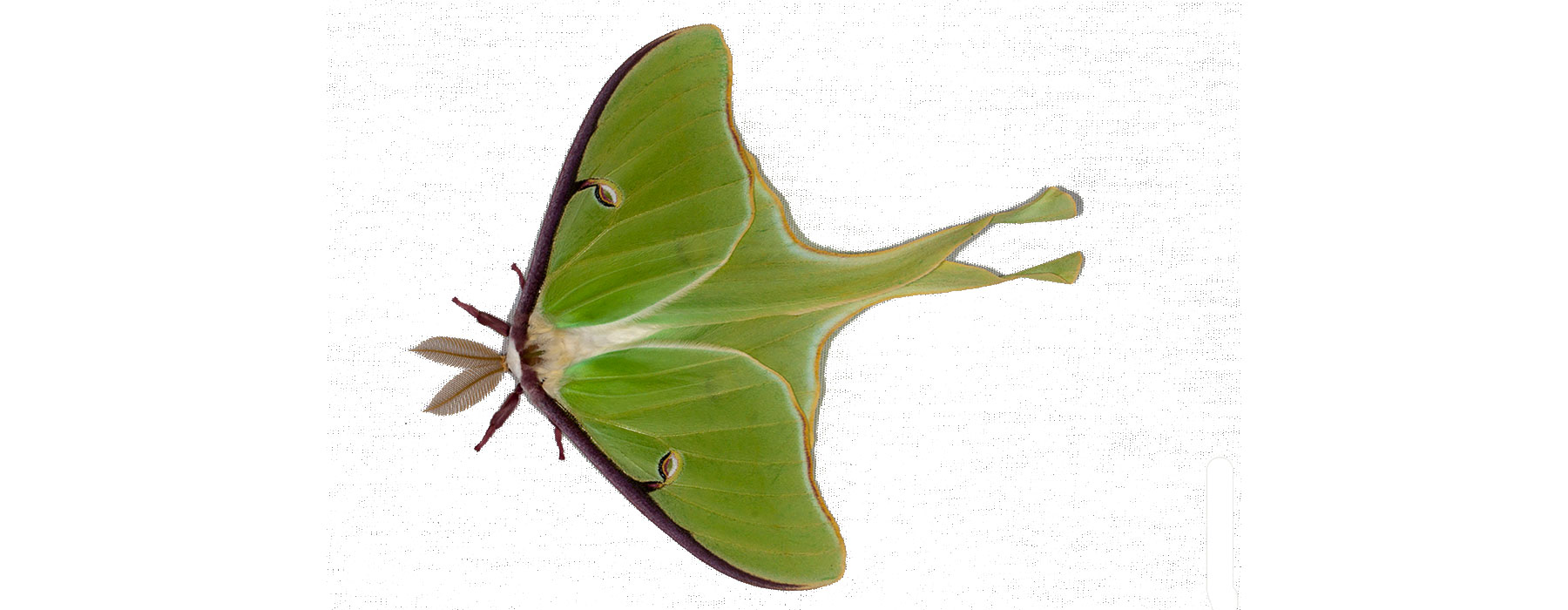Perhaps the most visually spectacular moth in the northeast, the Luna Moth’s otherworldly aura has made it perhaps the most famous and beloved member of the nocturnal insect world. Luckily, they are common in this region. Adults are very strong fliers and are attracted to lights. Mating takes place after midnight, and egg laying begins that evening. Females release a pheromone attracting males and lay eggs in small groups or singly on both surfaces of host plant leaves. Both adults die soon after mating. The eggs hatch in about one week and the caterpillars are sedentary and solitary feeders. Leaves and silk are used to spin papery brown cocoons in leaf litter under the host plant.
Cocoon Identification
Silk cocoon is off-white to light brown in color. It is wide and elliptical in shape. Cocoons are wrapped inside of leaves, but the silk does not extend around the leaf or anchor it to the tree, so cocoons fall to the ground with the leaves in autumn.
Learn more here.
Conservation Status
Resident – common
Vermont S5
Global G5
Distribution and Habitat
Wildly found across eastern North America and found across Vermont. Luna moths are found in deciduous forests.
Host Plants in Vermont
- Betula papyrifera – Paper Birch
- Juglandaceae – Hickories and Walnuts
- Rhus – Sumacs
- and many other deciduous plants.







